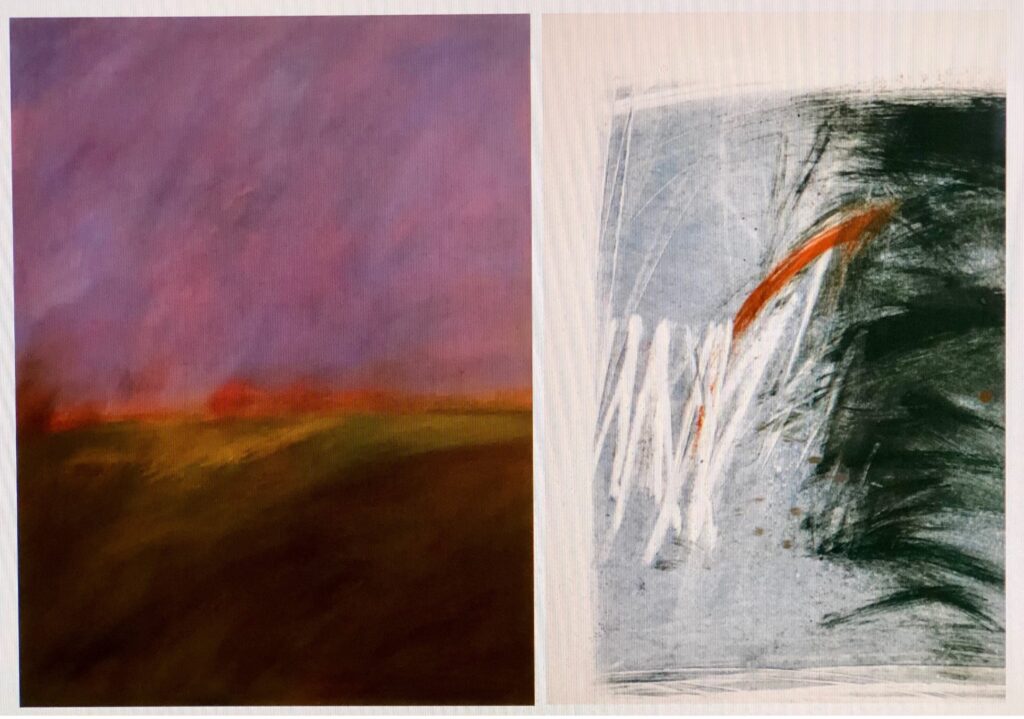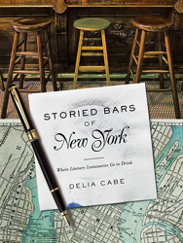Fifty-years ago I wrote a short story about a deceased bachelor lawyer in San Francisco who wrote fiction secretly for 40-years. When his townhouse was cleared following his death, the executor discovered the manuscripts neatly stacked in a closet and contacted a publisher to determine if they had literary worth. He said yes, and when published they were celebrated as a national literary event.
I’ve always been interested in the distinction between the creative process and its end product. My character was reclusive but felt compelled to write. He noted in his journal that with the volume of literature, mostly unread, filling library shelves was overwhelming and he had no interest in adding to it.
Is it the process or the product that drives an artist? I was married to a talented visual artist for thirty-years–a painter (chalk, pencil, watercolor, oil, acrylic, encaustic) and printmaker (woodcuts, linotypes, etchings, lithographs, monoprints, multi-media, collage). She had been an artist since early childhood. I loved her work and for years encouraged her to seek representation so others could see how good she was. She resisted until she was in her 40s, claiming her satisfaction came from making it not showing it. Eventually, an artist friend introduced her to a gallery owner who gave her a one-woman show. She continued making art. It’s what fed her. She made a moderate splash, developed a following, attracted a dealer and was represented by several galleries.

Nevertheless, in spite of her success, not everything sold, and the unsold inventory is currently in a family storage locker. It may seem like magical thinking, but I believe she’ll be re-discovered sometime in the future, chez Vermeer, and Antique Roadshow will tell one of her descendants that it’s worth millions. But art celebrity is capricious and arbitrary. She understood it was the process not the money or recognition that fed her creative spirit.
Over the years I’ve known many artists; writers, painters, potters, sculptors, musicians, some famous and some not, but recognition is not what drives most of them–it’s the need for self-expression. It may feel good to be recognized, but it’s the process that feeds their souls. It’s a relative few who can support themselves solely from the product. J. K. Rowling and Andy Warhol are rare exceptions.
Interesting facts: “Only 1 in 3 books make back what the publisher spent to acquire and release the book. Two-thirds of those numbers sell less than 1000 copies.” (Tim Grahl: Story Grid). I have great admiration for those artists who stay the course in spite of the odds against making a living at it. It takes courage, conviction, dedication and hard work.
Earlier this week I had a conversation with two writers, both published novelists, about their processes. Cecily Wong is finishing her third novel. Each one has taken five years from conception to publication. Her friend, Julia Pierpont is 200 pages into a second novel seven years after publication of her first, Among the Ten Thousand Things. Both are committed to their art, but need to support themselves with outside work – teaching, copywriting and in Cecily’s case managing a family store. Writing is not a get rich quick business.
Cecily and Julia are both fiction writers, but I also had a conversation with Delia Cabe, an old friend and non-fiction writer, who teaches magazine writing at Emerson College. I wanted to see if her process differed from theirs.
She told me that nonfiction is different. Rather than submit a completed manuscript, publishers and agents only want a proposal and sample chapters. This is great for the writer, who doesn’t have to spend time researching and writing without a contract. The publisher directs the author to create specific content he or she believes will sell.
In Delia’s case, she came up with the idea for a book about bars that were like libraries, pitched the idea to her agent who asked her to put together a PowerPoint proposal. It went out to multiple publishers, but only got a few nibbles. Two years later, the agent noticed an uptick in publishers wanting cocktail books and re-circulated the proposal. One publisher came back with an alternative: How about a book about bars in NYC with strong literary ties?
She took the idea and ran with it–spent three months of intensive writing and research (including countless days pounding the streets and bars of Manhattan and Brooklyn). The publisher loved it, passed it to a copy editor, and in 2017 The Storied Bars of New York a delightful romp through the literary watering holes of The Big Apple was published to great acclaim. BookRiot called it “One of the 10 Great Books for Booze-Loving Book Nerds.”

I occasionally submit an article or essay to Post Alley, a Seattle-based writers collective whose contributors are mostly retired journalists. “It taps an extensive talent pool of “displaced journalists,” experts and informed citizens — many of whom lack ready platforms for their work. The site is supported by contributions of time, writing, and editing by members of the Post Alley writers’ collective (now about 55 members).”
I’m flattered whenever one of my articles is published and even more so when a veteran journalist adds a favorable comment. But I write because I get satisfaction from the process. Writers–fiction, non-fiction, and journalists seldom hit the home run that leads to affluence and/or influence, but what they do is meaningful in every sense – personally and hopefully for the audiences that read them.
































As always Jack, a great article and story about a most difficult “process.”
Seems to me it’s all about passion. Thanks, Jack, for sharing yours.